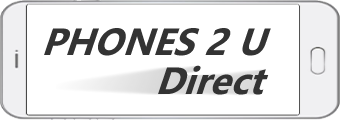 Image: ZDNet
Image: ZDNet
Yesterday the Wall Street Journal posted excerpts from an interview with Richard Yu, CEO of Huawei Consumer Business Group, where Mr. Yu stated that Huawei plans to become the number one smart-device supplier in the world within four or five years.
After spending a few weeks with both the Huawei Mate 8 and Huawei P9, in addition to several months with the Huawei-made Google Nexus 6P, I wouldn’t be surprised at all if Huawei is able to achieve that goal in that time frame. Huawei is currently in third place, behind Samsung and Apple. First quarter 2016 results show Samsung had 81.9 million units shipped, Apple had 51.2 million, and Huawei had 27.5 million. While both Samsung and Apple saw lower shipment volumes compared to 2015, Huawei saw an increase of 10 million units.
For those of you who may not yet be familiar with Huawei, pronounced “wah-way”, it is a name you should become familiar with and look out for when purchasing your next smartphone. Huawei has been very successful in China and in Europe with limited sales in the US, primarily through Amazon and importers. The Google Nexus 6P helped show US consumers that Huawei is serious about the high end smartphone market. In his interview, it was clear that Mr. Yu and Huawei understand the carrier-dominated US market and the challenges with getting name recognition in the US.
Google Nexus 6P
The Google Nexus 6P, see my full review, is the best Nexus device ever released. Huawei made the Nexus 6P and is proud of its high end specifications, elegant design, camera performance, and reasonable price.

Image: ZDNet
While most Huawei devices run the EMUI, Emotion UI, the Google Nexus 6P is a pure Google device that can even currently run the preview version of Android N. I use the Nexus 6P as my Project Fi test device and am very pleased with its design and performance.
Huawei P9
ZDNet’s Jason Perlow just posted an article on his experiences with the Huawei P9 and wrote that it provides a glimpse of the future. While the P9 doesn’t have the absolute highest specifications, it offers a unique camera experience in a very comfortable form factor for a reasonable price, about $560 at Amazon. It is powered by a HiSilicon Kirin 955, Huawei’s SoC.
I’ve been using a mystic silver Huawei P9 and prefer holding it over the HTC 10, primarily due to its sleek 6.95 mm thickness, rounded corners, 2.5D curved glass, and flush dual rear cameras. It’s light at 144 grams and slips right into my front pocket with ease.
While I personally like the Emotion UI, it looks much like what you find on an iPhone, you can easily install a preferred third party launcher if you desire. The Huawei P9 is fast, takes excellent photos, and has decent battery life.
With a 5.2 inch 1080p display, it still looks fantastic, you can see where Huawei will continue to improve as it works to meet US wireless carrier needs. The Huawei P9 is one of the best phones I’ve used in a while and gets me excited to see what Huawei will bring to the US in the future.
Huawei Mate 8
A couple of years ago Huawei sold the Ascend Mate2 direct from its US online store to US customers. It was priced at a very low $299.99 and had a 3,900 mAh battery powereing a six inch display. You could go for days with the Ascend Mate2 and I knew many people who bought and were extremely pleased with the phone.
Huawei recently launched the Huawei Mate 8 that continues the Mate2 heritage with a massive 4,000 mAh battery that can again last you for days. It also has a 1080p display, six inches in size, and is powered by a Kirin 950 processor and 3GB of RAM.
The Huawei Mate 8 has a similar design language to the P9 with 2.5D glass, all-aluminum construction, rear fingerprint scanner, same button and SIM card placement, and more.
Unfortunately, the Mate 8 is not yet sold on the Huawei US site like the Ascend Mate2, but you can pick one up online from places like Amazon for about $500. This is expensive, but when you realize the Apple iPhone 6s Plus starts at $749 (that’s just for the unacceptable 16GB storage model) then you can understand this is a reasonable price for a high end Android smartphone.
Huawei has its work cut out to get its name familiar to the US consumer and the biggest hurdle will be to satisfy the major US wireless carriers. Mr. Yu seems to understand this so it will be great to have people talking about phones other than an iPhone or a Galaxy phone in the next couple of years.
Source: http://www.zdnet.com/blog/cell-phones/rss.xml
